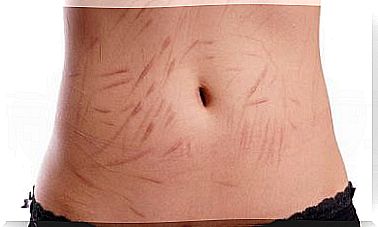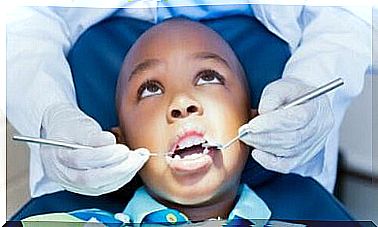Migraine During Adolescence: A Sensitive Problem

Most of the time we get headaches, it is only temporary and we do not pay much attention to it. However, there are times when the headache can become more persistent and almost unbearable.
Migraines are recurrent and intense headaches. They are usually related to vascular diseases of the brain.
Migraine feels like a headache but with increased pressure on nerves, blood vessels, neck and shoulders. According to experts, headaches are the most common neurological disorder during childhood, which in this context also includes teenagers.
Dr. Charles Wibblesman, a member of the American Academy of Pediatrics, says that many of these cases of headaches are due to the pressure on adolescents. It can be stress caused by school, leisure activities, family and friends.
Migraines during adolescence: A sensitive problem
Migraine is a very intense and recurring form of headache. It is also typically centered on one side of the head. Migraines are more common in women and occur most frequently between the ages of 10 and 30.
Some experts believe that the condition can be hereditary, as 50% of those who suffer from migraines also have relatives who suffer from or have previously suffered from migraine attacks. The most accepted pathophysiological explanation is a neurogenic inflammation due to the activation of the vascular system of the trigeminal nerve.
How to recognize migraines during adolescence
Migraine attacks are characterized by sudden onset. They may also be accompanied by the following symptoms:
- Nausea or vomiting.
- Significant pain.
- Pain that does not go away with medication and that gets worse from exercise or other physical activity (such as walking up the stairs).
- Visual disturbances such as extreme light sensitivity, loss of vision in a certain area or that you see spots of light.
- Lack of appetite.
- Fatigue.
Causes of migraines during adolescence
It is not known exactly what causes migraines and it is still the subject of intensive studies. However, there are certain factors that can affect seizures, such as:
- Genetics: It is not entirely clear how migraines are inherited, but it has been discovered that certain types of migraines can be inherited with the 9th chromosome.
- Head injuries: Concussion with or without loss of consciousness can lead to migraine attacks.
- Stress: Tension, anxiety and worry can all have negative consequences and lead to a reduction in the body’s defenses against migraine attacks.
- Hormones: Hormones are the main reasons why migraines occur more in women than in men during adolescence. Migraines usually get worse during ovulation and menstruation.
- Oral contraceptives can also cause migraines in some cases. However, it has been seen that pregnancy and menopause can reduce the incidence of migraines.
- Bad habits: This is mostly related to eating habits and alcohol intake. Foods that contain sodium glutamate (MSG), tyramine and nitrates can all make migraines worse.
- Too little sleep: Sleep disturbances and misuse of cell phones and other screens can trigger migraine attacks.
- Environment: Bright light, temperature changes and high altitudes can also trigger migraine attacks.

Treatment of migraines during adolescence
First of all, it is important to clarify that the condition is not easy to diagnose. In fact, it can take several months to detect migraines. Specialists only consider that it is “likely” that a teenager has a migraine after ruling out other pathologies.
Once the diagnosis is established, one of the most effective ways to alleviate the initial phase of symptoms is at rest and by taking special medications. Doctors usually recommend painkillers, anti-inflammatory drugs, antiemetics, ergotamine and triptans.
In addition, pharmacological and non-pharmacological prevention methods can be used. Drugs such as beta-blockers, neuromodulators, calcium channel blockers, antidepressants and antihypertensive drugs can be used to prevent migraines. Botox is also used as an innovative way to prevent migraines.
Non-pharmacological preventive treatments consist of correcting eating habits by, for example, incorporating nutrients that the patient may be deficient in, such as certain vitamins. There are also physical therapy methods such as massage, acupuncture and yoga.
Other methods you can try are to practice relaxation and to have a correct posture. Some doctors recommend psychological therapy such as hypnotherapy or psychotherapy.
Final advice
People who have suffered from migraines during adolescence are advised to keep track of the date of various symptoms, their duration and possible triggers. When it comes to women, it is important to keep track of the start date of menstruation so that the doctor can get more information and be able to draw important conclusions.









